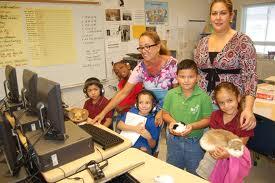Why The Alarm Is Going Off About Students Learning English As A Second Language
Full disclosure: My wife is a bilingual teacher and my children grew up speaking English and Spanish. But you don’t need those factors in your life to have a vested interest in how well the school program commonly known as ESOL – English for Speakers of Other Languages – is faring in this country, state and community.
Latinos are now the largest minority in the US. Florida’s population growth today is driven largely by Latinos. And Latinos make up almost two-thirds of Miami-Dade County’s residents.
A quarter million Florida youths, a tenth of the state’s public school students, are enrolled in ESOL. The program accounts for a fifth of Miami-Dade’s public school pupils – and more than 25 percent when you include the system’s ESOL adults.
There are certainly Florida schools, like Miami’s Coral Way K-8 Bilingual Center, where ESOL is exemplary. But as a new academic year gets underway – and as classrooms face the more rigorous Common Core standards – there are nagging signs that too many Florida ESOL students are slipping behind. Or as El Nuevo Herald education writer Daniel Shoer Roth recently put it, an “alarm has sounded” among

